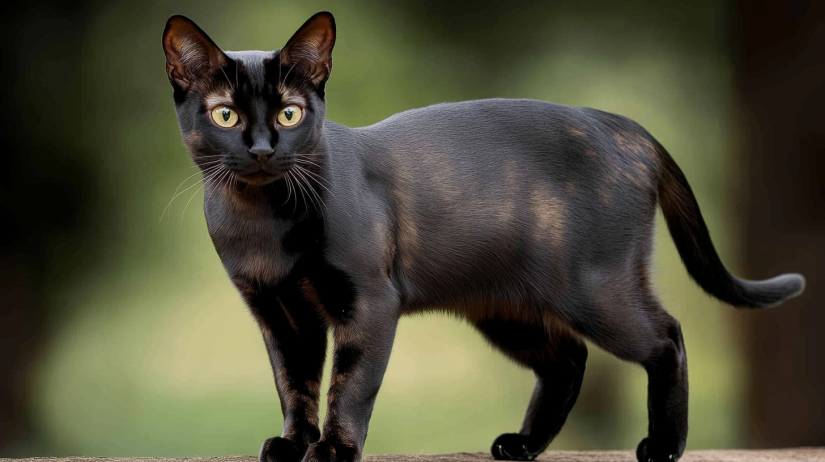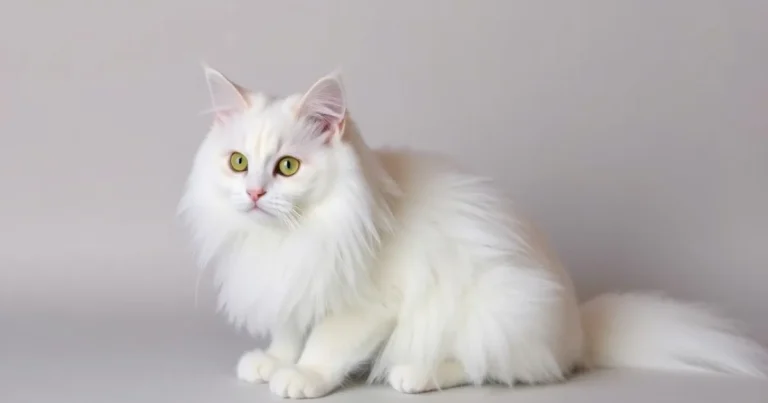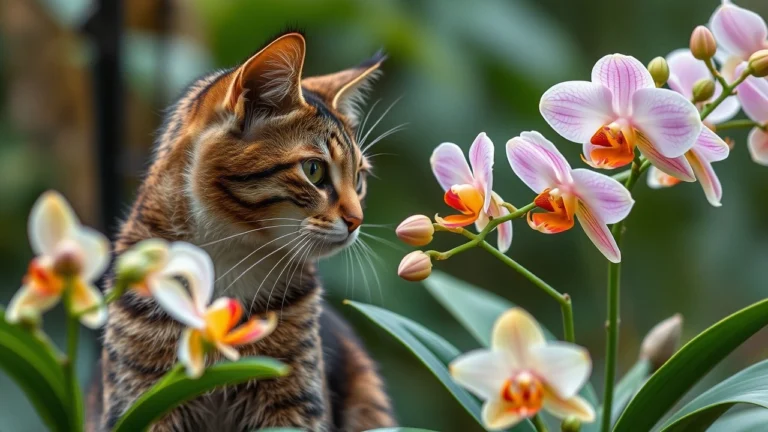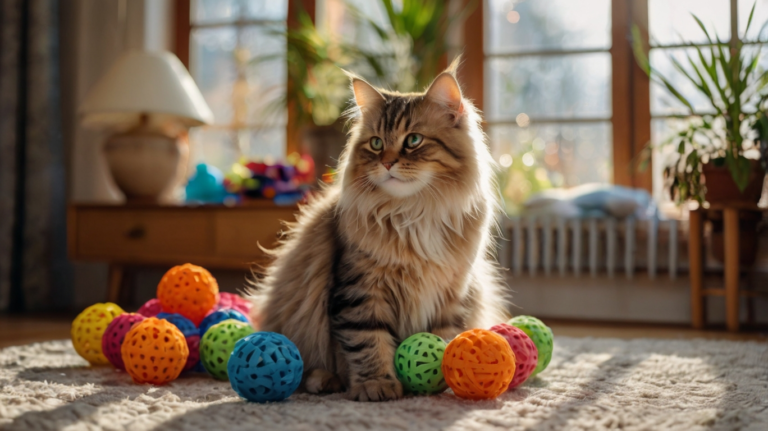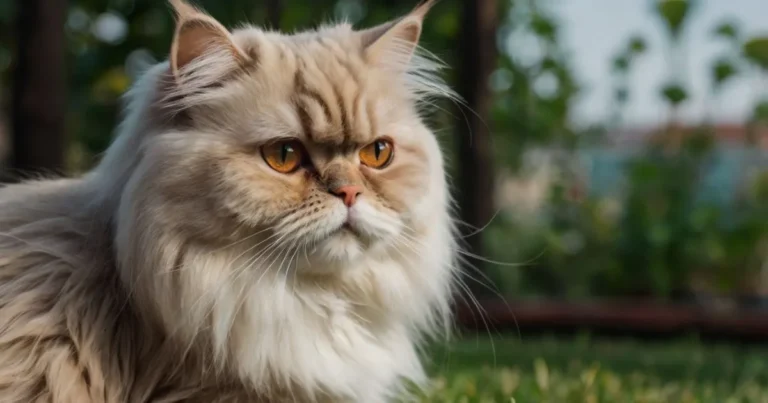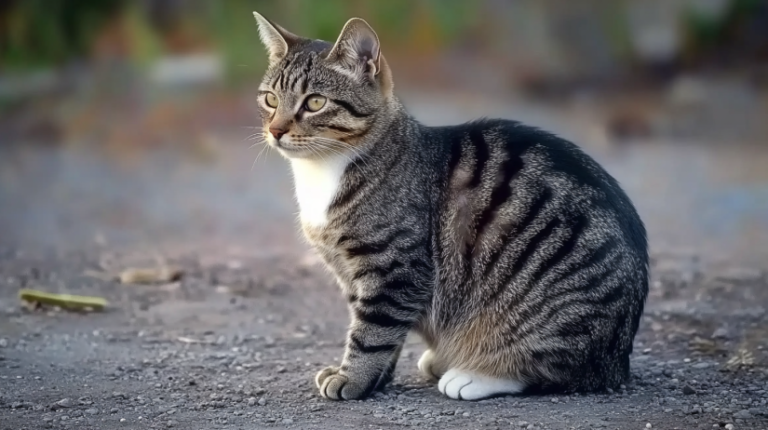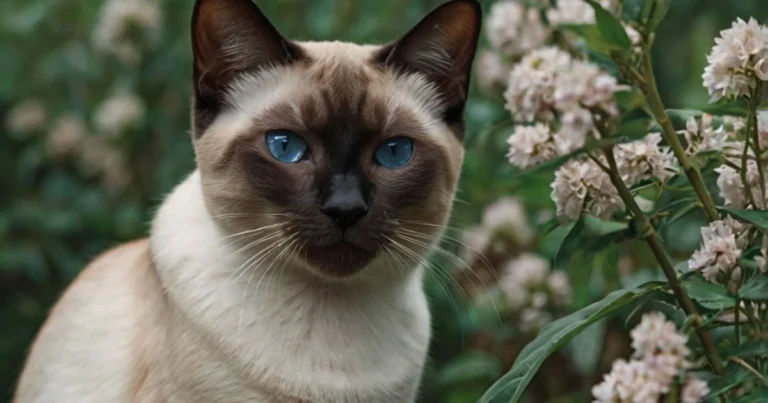Black (Melanistic) Bengal Cat Breed: 7 Stunning & Ultimate Facts
Introduction
Imagine the bewitching gaze of a miniature panther lounging gracefully on your couch, flicking its tail, and watching you with keen curiosity. That is precisely the kind of mystique you can expect from the Black (Melanistic) Bengal Cat Breed—a stunning variant of the already striking Bengal, boasting a velvety dark coat peppered with hidden, shadowy rosettes. This cat seems to have stepped straight out of a jungle adventure, only to saunter into your living room and claim your favorite spot on the sofa.
In this article, we are going to unwrap the secrets behind the Black (Melanistic) Bengal Cat Breed, dissecting everything from their genetic makeup to their grooming requirements. We will explore their temperament, health needs, and training tips so that you can decide whether this mesmerizing feline is the perfect companion for you. Prepare to discover credible data, personal experiences, and tips on caring for this beguiling breed. Whether you are a devoted Bengal enthusiast or simply curious about cats that look like something from a wildlife documentary, read on to uncover all the delightful details.
Table of Contents
- What Makes the Black (Melanistic) Bengal Cat Breed Unique?
- Origins and Genetic Story of the Black (Melanistic) Bengal Cat Breed
- Physical Appearance and Coat Characteristics
- Personality and Temperament
- Health and Lifespan
- Nutritional Needs and Grooming
- Training and Enrichment Tips
- Cost, Adoption, and Where to Find a Black (Melanistic) Bengal Cat Breed
- FAQs
- Conclusion
- Key Takeaways
What Makes the Black (Melanistic) Bengal Cat Breed Unique?
When it comes to showstopper felines, the Black (Melanistic) Bengal Cat Breed stands out like a polished onyx gem. Their charcoal-colored coat can appear pure black at first glance, yet under proper light, you will notice faint rosettes—those trademark Bengal spots that give them a mini leopard look. Their rarity alone piques the interest of cat enthusiasts who crave something more exotic.
- Rare Coat Variation: Unlike the more common brown or snow Bengals, these ebony beauties owe their coat color to a recessive gene that intensifies melanin production.
- Elusive Spots: The ghost spots are easier to see in natural sunlight or strong indoor lighting.This duality Gives them an extra dash of appeal of charm to their appearance.
- Confident Demeanor: Expect an athletic, high-energy cat that loves interactive play sessions. They are not wallflowers; they thrive in environments where they can jump, climb, and explore.
- Close Bonding: Many owners of the Black (Melanistic) Bengal Cat Breed report that their cats form exceptionally tight bonds with their families.
Origins and Genetic Story of the Black (Melanistic) Bengal Cat Breed
The Black (Melanistic) Bengal Cat Breed come from the same background as regular Bengals, which are mixes of house cats and Asian Leopard Cats. Though Bengals made their first major appearance in the 1960s and 70s, the melanistic version has captured the collective imagination more recently.
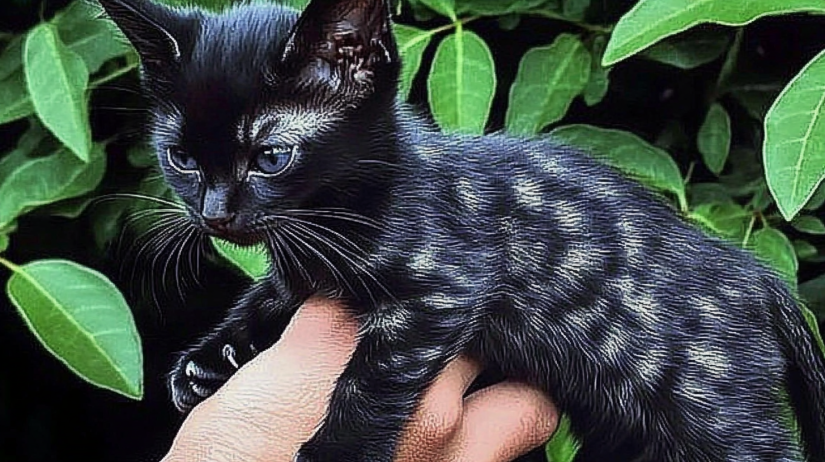
The Asian Leopard Cat Connection
The Bengal was originally bred to preserve the wild look of the Asian Leopard Cat while integrating the friendly personality of domestic felines. A typical Bengal inherits the distinctive rosettes from its wild ancestor, but in the Black (Melanistic) Bengal Cat Breed, these rosettes are faintly shadowed.
- Melanistic Gene: This gene overproduces pigment, resulting in the dark coat.
- Recessive Trait: Both parents need to carry the gene for a melanistic coat to appear in their offspring.
Historical Timeline
- 1960s–1970s: Early Bengal breeding programs began, mixing Asian Leopard Cats with short-haired domestics.
- 1980s–1990s: Bengals gained official recognition and a devoted fan base.
- 2000s–Present: Growing interest in rarer coat variations, including the Black (Melanistic) Bengal Cat Breed, led to careful, specialized breeding.
Reputable breeders make diligent efforts to maintain healthy genetic lines. This often includes routine checkups and screening for common feline conditions. For additional authoritative information on cat genetics, consider the research documented by the UC Davis Veterinary Genetics Laboratory.
Physical Appearance and Coat Characteristics
A single glance at a Black (Melanistic) Bengal Cat Breed is enough to spark intrigue. They often resemble a miniature black leopard, which can be especially evident when they prowl across the floor in a playful crouch.
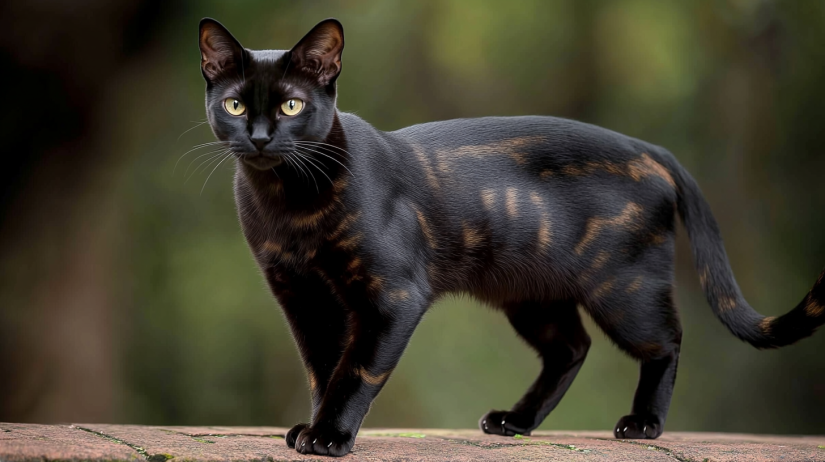
Size and Build
- Medium to Large: Typically weighing between 8 and 15 pounds, with a lean yet muscular body.
- Athletic Frame: Strong shoulders, agile limbs, and a sleek torso allow them to excel at climbing and jumping.
- Expressive Face: Large, almond-shaped eyes that can range from gold to green, set in a face that is slightly more angular than many domestic breeds.
Coat Patterns
- Faint Rosettes: Sometimes referred to as “ghost spots,” visible in bright light.
- Soft and Glossy: Bengals generally have a smooth, luxurious texture to their coat.
- Minimal Shedding: While no cat is entirely hypoallergenic, the Bengal’s short coat can be easier for some allergy sufferers to manage.
Personal Note: My own experience with the Black (Melanistic) Bengal Cat Breed taught me that their coats can look dramatically different depending on the lighting. Under dimmer lights, they appear as a velvety black silhouette, but once sunlight hits, the subtler markings shine through, making for incredible photo opportunities.
Coat Care Table
Below is a quick reference table on caring for the coat of your Black (Melanistic) Bengal Cat Breed:
| Coat Feature | Care Tips | Frequency |
|---|---|---|
| Short Fur Length | Use a soft-bristled brush or rubber grooming glove. | 1–2 times per week |
| Low Shedding Tendency | Vacuum or sweep areas where hair accumulates. | As needed |
| Glossy Texture | Occasional gentle wipe-down with a damp cloth. | Monthly or as required |
| Sensitive Skin | Use cat-specific shampoos if bathing is necessary. | Only if recommended by a vet |
Personality and Temperament
Are you prepared for a cat that greets you at the door, demands playtime, and may even follow you around like a devoted sidekick? The Black (Melanistic) Bengal Cat Breed is just that sort of companion.
- Highly Social: They often enjoy the company of humans, other cats, and even cat-friendly dogs.
- Intelligent: Puzzle feeders, interactive toys, and training sessions can keep their minds stimulated.
- Vocal and Expressive: Bengals can be chatty. You may hear an array of chirps, meows, and other unique sounds.
- Strong Prey Drive: Watch out for birds or small rodents in the household; these cats often have natural hunting instincts.
Expert Opinion: According to a study published in the Journal of Veterinary Behavior, cats with strong predatory instincts, like Bengals, benefit from environmental enrichment. Activities such as treasure hunts for treats or laser-chase games can positively engage them.
Health and Lifespan
A Black (Melanistic) Bengal Cat Breed can live between 12 to 16 years, provided it receives proper care and routine veterinary checkups. While these cats are generally robust, there are some breed-specific conditions to keep in mind.
Common Health Concerns
- Hypertrophic Cardiomyopathy (HCM): A heart condition common in some Bengal lines.
- Progressive Retinal Atrophy (PRA): An eye disorder leading to vision loss if unchecked.
- Polycystic Kidney Disease (PKD): Cysts in the kidneys that can affect overall kidney function.
- Dental Issues: Like many cats, Bengals can develop gingivitis or periodontal disease.
Preventive Measures
- Schedule annual (or biannual) vet checkups and screenings for known health concerns.
- Keep a balanced menu to help protect your heart and kidneys.
- Practice regular dental care, such as tooth brushing or using vet-approved dental treats.
Reference: The Cornell Feline Health Center recommends consistent wellness exams and early detection screenings as crucial elements of feline healthcare.
Nutritional Needs and Grooming
Diet and Feeding
Feeding a Black (Melanistic) Bengal Cat Breed a high-quality, protein-rich diet supports their high energy levels. Look for cat food formulated for active breeds:
- High Protein Content: Choose protein sources like chicken, turkey, or fish.
- Balanced Fats and Carbohydrates: Bengals expend a lot of energy, so a balanced macro-nutrient profile is essential.
- Portion Control: Overfeeding can lead to obesity, which stresses joints and internal organs.
Vet Tip: Discuss with your veterinarian to determine the right portion sizes and food brands based on your cat’s age, weight, and overall health status.
Grooming Beyond the Coat
- Nail Trims: Keeping to a 2–3-week schedule helps control claw growth and protects household items.
- Dental Care: Brushing a few times a week or using dental chews.
- Ear Checks: Carefully wipe any visible debris with a solution recommended by your vet.
- Bathing: Unless your cat gets into something particularly messy, a bath every few months (if tolerated) is usually sufficient.
For additional tips on maintaining optimal cat hygiene, you might refer to the guidelines from the American Society for the Prevention of Cruelty to Animals (ASPCA), a reputable organization dedicated to animal welfare.
Training and Enrichment Tips
The Black (Melanistic) Bengal Cat Breed is known for its high intelligence and athletic prowess. These traits can serve as both an advantage and a struggle. Providing ample opportunities to learn and explore will keep them engaged.
Effective Training Methods
- Clicker Training: Associate clicking noises with treats to reward your pet.
- Leash Training: Some Bengals can learn to enjoy walks. Begin indoors with a harness.
- Trick Training: Basic commands like “sit” or “high-five” enrich their mental well-being.
Enrichment Ideas
- Cat Trees and Shelves: Encourage climbing to satisfy their jungle-cat instincts.
- Interactive Toys: Laser pointers, feather wands, and puzzle boxes can challenge them physically and mentally.
- Window Perches: Bird-watching can be a thrilling daily pastime for them.
Call to Action: If your Black (Melanistic) Bengal Cat Breed seems restless or bored, try introducing new toys every few weeks and rotating them to maintain novelty. You may even consider hidden treat dispensers around the house to keep your cat’s inquisitive nature piqued.
Cost, Adoption, and Where to Find a Black (Melanistic) Bengal Cat Breed
Owning a Black (Melanistic) Bengal Cat Breed can be a significant investment, especially if you opt to buy from a specialized breeder. Adoption fees can vary depending on whether you find one at a rescue organization. Below are some key considerations:
Breeder vs. Adoption
- Breeder Price Range: Expect anywhere from $1,500 to $3,500, depending on lineage and quality.
- Adoption Fees: You might get lucky finding a Black (Melanistic) Bengal Cat Breed in a shelter, with fees often ranging from $100 to $300. Availability, however, is less common.
- Health Guarantees: Reputable breeders usually provide health screenings and sometimes a limited health guarantee.
Additional Costs
- Veterinary Visits: Annual checkups, vaccinations, and potential medical treatments.
- High-Quality Food: Expect to pay more for premium diets suited to this active breed.
- Accessories: Think cat trees, scratching posts, interactive toys, and grooming tools.
FAQs
Are Bengals friendly?
Yes, Black (Melanistic) Bengal Cat Breed individuals often love socializing with people. They enjoy interactive play and forming strong bonds. With proper introduction, they can also get along well with other pets.
Do they need outdoor access?
A Black (Melanistic) Bengal Cat Breed can thrive indoors with enough enrichment. Many enjoy leash walks or enclosed catios. Always supervise outdoor adventures for safety.
How big do they get?
A Black (Melanistic) Bengal Cat Breed typically weighs 8–15 pounds. They have a muscular, agile frame. Their athletic build is ideal for climbing and jumping.
Are they talkative cats?
Yes, the Black (Melanistic) Bengal Cat Breed is known for vocalizations. They may chirp, meow, or trill often. This expressiveness helps them communicate wants or moods.
Is their coat truly black?
Yes, a Black (Melanistic) Bengal Cat Breed appears black in low light. Under bright light, subtle spots show through. This hidden pattern makes them uniquely captivating.
Can they live in small apartments?
Yes, a Black (Melanistic) Bengal Cat Breed can adapt to apartments. Offer vertical spaces and interactive toys. Regular play sessions help channel their high energy.
Do they require special grooming?
A Black (Melanistic) Bengal Cat Breed has a short, glossy coat. Weekly brushing is often enough. Occasional baths are okay, but not always necessary.
H3: Are they good with children?
A Black (Melanistic) Bengal Cat Breed can be excellent with respectful kids. Early socialization helps them become tolerant companions. Supervise interactions to ensure gentle handling.
Conclusion
Caring for a Black (Melanistic) Bengal Cat Breed is like inviting a piece of the wild into your living room—minus the actual jungle, of course. These cats bring elegance, mystery, and boundless energy to households willing to accommodate their curious nature. If you are prepared to offer time, engagement, and a healthy environment, you will be rewarded with a devoted feline companion that never ceases to amaze. Share your own stories or experiences with these captivating creatures in the comments, and feel free to pass along this article to other cat lovers who might find it helpful.

